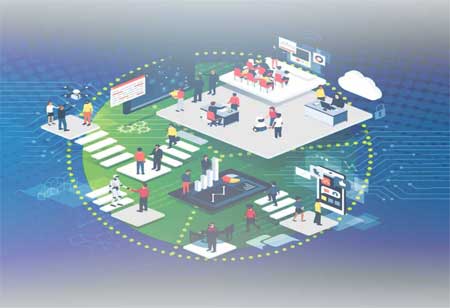THANK YOU FOR SUBSCRIBING
Serverless Computing: The Future of Cloud Computing
In recent years, the landscape of cloud computing has been undergoing a significant transformation, giving rise to innovative paradigms that offer enhanced scalability, reduced management overhead, and more efficient resource utilisation.

By
Apac CIOOutlook | Wednesday, August 23, 2023
Stay ahead of the industry with exclusive feature stories on the top companies, expert insights and the latest news delivered straight to your inbox. Subscribe today.
Serverless computing involves breaking down applications into smaller functions, allowing developers to package and deploy them on a serverless platform, reducing virtual machine provisioning and management.
FREMONT, CA: In recent years, the landscape of cloud computing has been undergoing a significant transformation, giving rise to innovative paradigms that offer enhanced scalability, reduced management overhead, and more efficient resource utilisation. One of the prominent concepts that has emerged from this evolution is "serverless computing," a model that goes beyond traditional virtual machines (VMs) to provide a more granular and efficient approach to deploying and managing applications in the cloud. Serverless computing has gained rapid adoption due to its ability to simplify development, optimise resource allocation, and facilitate cost-effective scalability.
The Evolution of Cloud Computing: From VMs to Serverless
Traditional cloud computing models, based on virtual machines, have long been the cornerstone of cloud infrastructure. Virtual machines enabled users to emulate entire servers on a single physical host, offering flexibility and isolation. However, VMs come with their own set of challenges, including the need to manage and provision resources, monitor and scale instances manually, and deal with over-provisioning or underutilisation of resources.
Serverless computing emerged as an evolution beyond VMs, aiming to address these challenges. Contrary to its nomenclature, the concept of serverless does not imply the absence of servers within the operational framework. Instead, it abstracts away the infrastructure management and lets developers focus solely on writing code. This abstraction is achieved through "function as a service" (FaaS) platforms.
Key characteristics of serverless computing include
Event-driven: Serverless platforms execute functions in response to specific events. These events can be HTTP requests, changes in a database, file uploads, or even scheduled tasks. The platform automatically triggers the appropriate functions based on the incoming events.
Automatic Scaling: One of the standout features of serverless computing is its automatic scalability. As the workload increases, the serverless platform dynamically provisions resources to handle the load. This eliminates the need for manual scaling, making applications more responsive to fluctuating demands.
Pay-Per-Use: Serverless platforms charge users based on the actual consumption of resources by their functions. This pay-as-you-go pricing model contrasts with traditional VMs, where users pay for reserved resources regardless of their actual usage.
Resource Management: With serverless, developers are relieved from the responsibility of managing server infrastructure. The platform handles resource provisioning, scaling, and load balancing, enabling developers to focus solely on writing code.
Reduced Latency: Serverless computing can lead to lower latency as functions are executed in proximity to the event source. This is particularly advantageous for applications that require rapid responses, such as real-time data processing.
Benefits
Serverless computing offers several benefits that make it an attractive option for modern application development
Reduced Complexity: Developers can focus on code rather than infrastructure, accelerating the development lifecycle.
Cost Efficiency: Pay-per-use pricing and automatic scaling help optimise resource allocation, potentially reducing costs.
Scalability: Applications can seamlessly scale to handle varying workloads without manual intervention.
Flexibility: The event-driven model supports a wide range of use cases, from APIs and web applications to data processing pipelines.
Serverless computing represents a significant shift in how applications are developed, deployed, and managed in the cloud. By abstracting away infrastructure concerns, it empowers developers to focus on writing code and creating value. As organisations continue to prioritise agility, scalability, and cost-efficiency, the serverless paradigm is poised to play a pivotal role in reshaping the future of cloud computing beyond the limitations of virtual machines.





